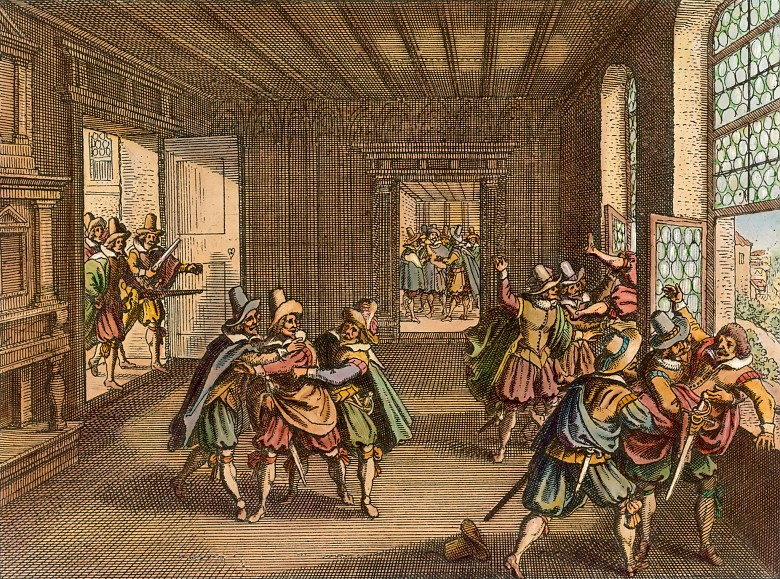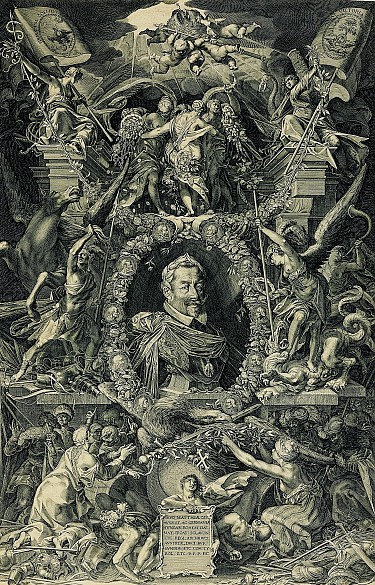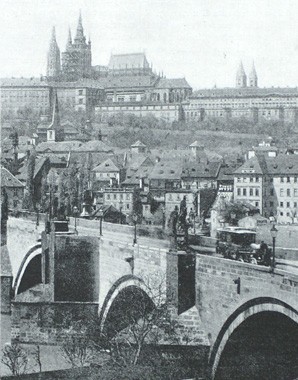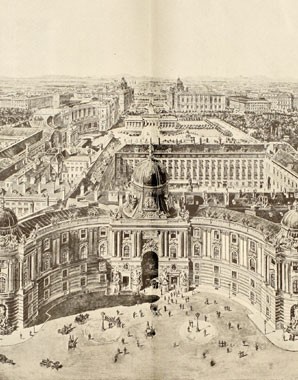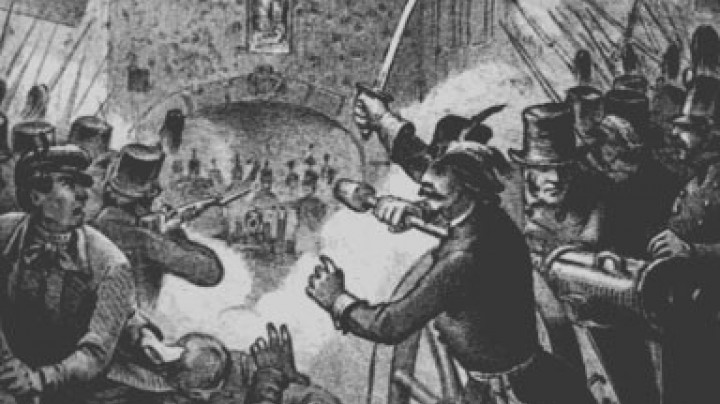Governors thrown out of window
Defenestrations – the throwing of people out of windows – were frequent events in the Middle Ages and early modern period. However, the most celebrated example is the Prague defenestration of 1618.
From the chronicle of the Thirty Years’ War by the Aulic Councillor Count Volkmar Happes, concerning the Prague defenestration, which he mistakenly dated two days earlyOn 21 May in the year 1618 the Protestant Bohemian Estates threw three high-ranking imperial councillors from their offices down into the castle moat, leading to the bloody Bohemian war, which lasted for many years on end, spread almost across the whole world, and wrought harm upon all lands.
Emperor Matthias set little store by the guarantee of religious freedom granted to Bohemia by his predecessor Rudolf II – his reign saw many Protestants being deprived of their offices and replaced by Catholics. The year 1617 saw a further increase in tension with the Protestant Estates of Bohemia expressing adamant disapproval of the proposed coronation as king of Bohemia of Matthias’s cousin Ferdinand, who was a radical exponent of the Counter-Reformation.
On 23 May 1618, the protests of the Estates at Emperor Matthias’s lack of willingness to compromise led to a few dozen delegates forcing their way into Prague castle, including in their number a group of nobles who wished to provoke an uprising by murdering the representatives of Catholic rule. Without further discussion, they threw the Habsburg governors Count Wilhelm Slavata and Count Jaroslav Bořita Martinitz and their secretary out of the window. Defenestrations of this kind were common occurrences in the Middle Ages and early modern period: at the beginning of the Hussite wars in 1419, for instance, a number of councillors were defenestrated at the City Hall in the new town, also partly for religious reasons.
The victims of the 1618 defenestration were not seriously injured and were believed by Catholics to have been miraculously saved by the Virgin Mary. Not only did the two governors survive but they later rose to even higher rank in the administration of Bohemia. Politically speaking, however, the defenestration had grave consequences, triggering off a rebellion of the Estates in Bohemia under the leadership of Count Heinrich Matthias von Thurn with the Estates themselves taking over government in Prague.
There was also an uprising of the Estates in Austria, where on 5 June 1619 Protestant noblemen under the leadership of Andreas von Thonrädl forced their way into the Hofburg in Vienna in order to petition Ferdinand II for the recognition of their rights. Although the imperial-royal troops had no difficulty in swiftly suppressing the Austrian and Bohemian uprisings, the religious conflicts sparked off a widespread conflagration in Central Europe that has gone down in history as the Thirty Years’ War.
